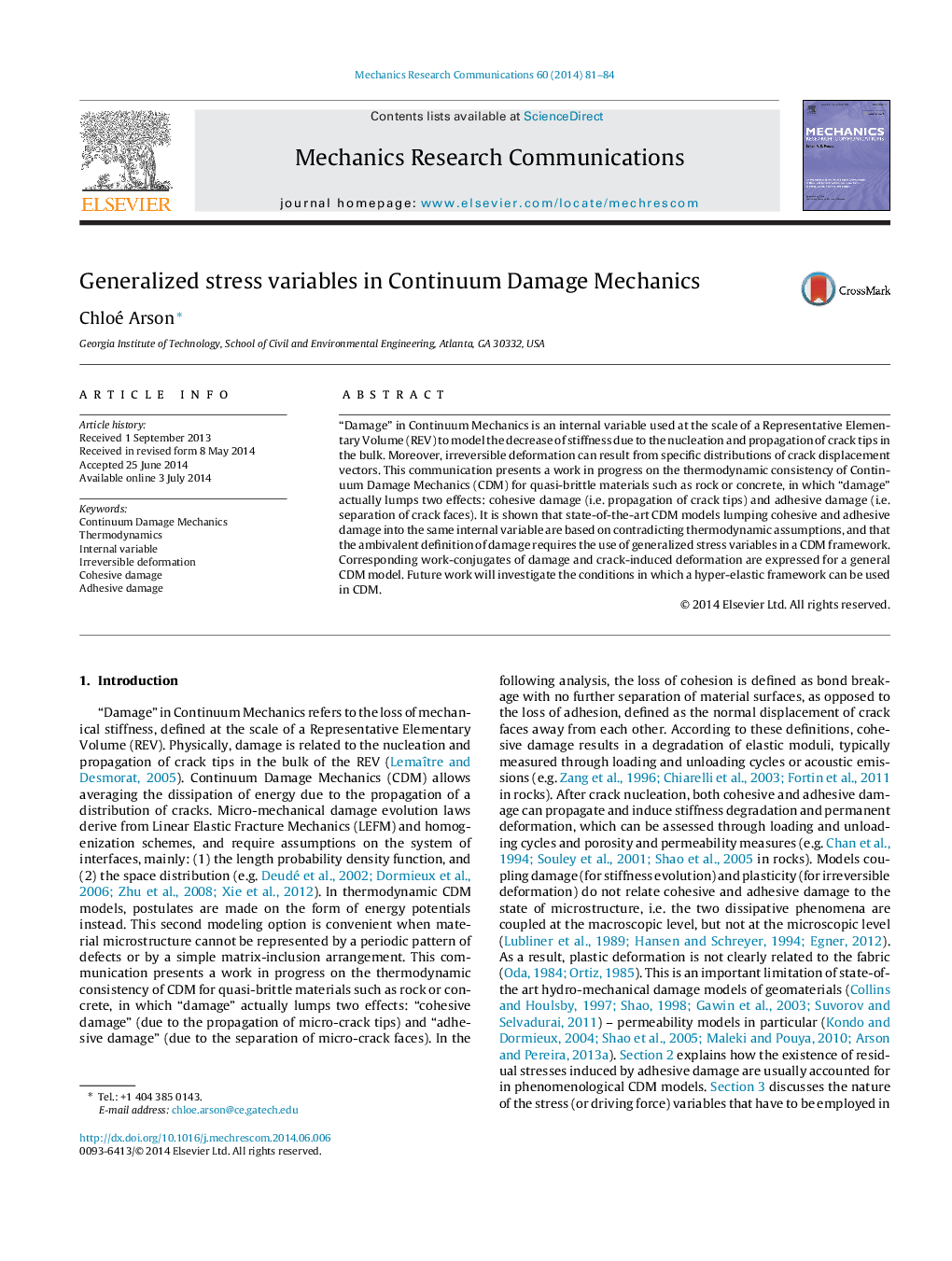| Article ID | Journal | Published Year | Pages | File Type |
|---|---|---|---|---|
| 801122 | Mechanics Research Communications | 2014 | 4 Pages |
•Lumping cohesive and adhesive Continuum Mechanics damage contradicts thermodynamics.•The ambivalent definition of damage requires the use of generalized stress variables.•Work-conjugates of damage and permanent deformation are expressed.•Truly hyper-elastic Continuum Damage Mechanics frameworks are discussed.
“Damage” in Continuum Mechanics is an internal variable used at the scale of a Representative Elementary Volume (REV) to model the decrease of stiffness due to the nucleation and propagation of crack tips in the bulk. Moreover, irreversible deformation can result from specific distributions of crack displacement vectors. This communication presents a work in progress on the thermodynamic consistency of Continuum Damage Mechanics (CDM) for quasi-brittle materials such as rock or concrete, in which “damage” actually lumps two effects: cohesive damage (i.e. propagation of crack tips) and adhesive damage (i.e. separation of crack faces). It is shown that state-of-the-art CDM models lumping cohesive and adhesive damage into the same internal variable are based on contradicting thermodynamic assumptions, and that the ambivalent definition of damage requires the use of generalized stress variables in a CDM framework. Corresponding work-conjugates of damage and crack-induced deformation are expressed for a general CDM model. Future work will investigate the conditions in which a hyper-elastic framework can be used in CDM.
